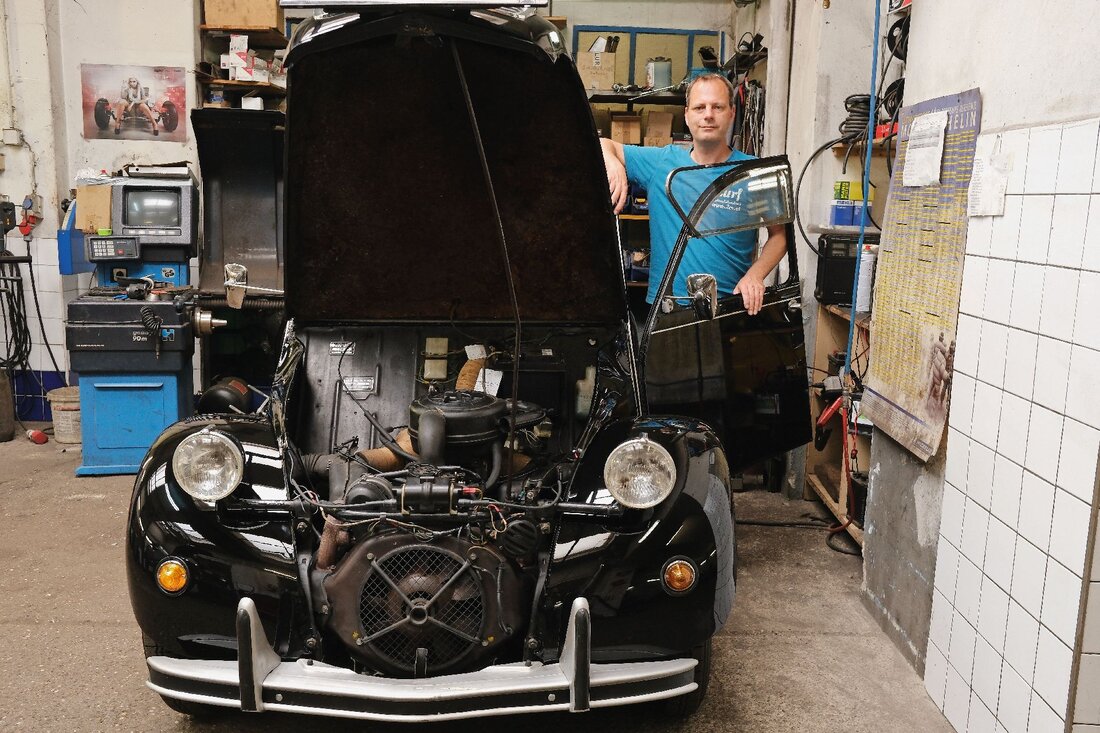The Duck” Doctor
29 years ago, Stefan Lurf began his apprenticeship as a car mechanic in the 2CV workshop in Vienna Ottakring. He took over the business in 2006 and has remained loyal to the “Duck” to this day.

The Duck” Doctor
After completing his training as an IT clerk, Stefan Lurf had enough of computers and decided to start a career as an automotive technician in a vintage car workshop. His dream was to one day be able to work on super sports cars, but when he signed his apprenticeship contract in Bernhard Propper's workshop in Vienna-Ottakring in 1996, disappointment at the customer vehicles was written all over his face: ducks, with tiny engines that produce a maximum of 29 hp! But it didn't take long for the young apprentice to be infected by his teacher "Master Propper's" enthusiasm for the brilliantly minimalist cult vehicles from France - an enthusiasm that continues to this day. And so when Propper retired in 2006, Lurf took over his business and its loyal regular customers. The first 2CV was presented at the Paris Motor Show 77 years ago, and in 1990 the last duck finally left the assembly halls at the Portuguese Citroën plant in Mangualde. A total of 3,868,631 four-door sedans and 1,246,335 “box ducks” were manufactured during the period. In 1987, compulsory cat breeding sealed the end of the duck population in Austria. Although more and more ducks have fallen victim to rust since then, the number of duck lovers has been steadily increasing in recent years. They are mainly academics for whom the once cheap vehicle was the ideal student car.
Strengths and weaknesses
Since the 2CV underwent only minimal changes during its entire construction period, Stefan Lurf knows every screw on the vehicle, which he has been working with for almost 30 years. He has looked after numerous customers since 1996 to this day, and many ducks still have the old black license plates. The duck doctor is also familiar with all possible and impossible defects. He shares his therapeutic know-how with his experienced team, which consists of three automotive technicians and an apprentice. One of the duck's weak points is the electrical system, which can manifest itself in starting difficulties or lighting system failures. The installation of an electronic ignition system, which a resourceful Dutchman developed specifically for the 2CV, solves some of the most common problems in this area. The carburettor also needs attention, as the ethanol content in today's gasoline clogs the seals and fuel hoses. In addition, the grease nipples on the kingpins must be lubricated regularly to extend their service life. Otherwise, the maintenance effort for the duck remains manageable and the classic car can definitely be used as an everyday car. According to Stefan Lurf, the most important measure for maintaining duck fitness is regular cavity protection. In addition to 2CV models of all years and designs, customers with historic A and D models from Citroën, including the “Goddess” DS, also visit the Francophile automotive technician's workshop, which is generally open to all brands. Occasionally a real sports car even comes by for repairs or service, which means that Stefan Lurf's teenage dream has finally come true. Further information: www.2cv.at

 Suche
Suche
 Mein Konto
Mein Konto